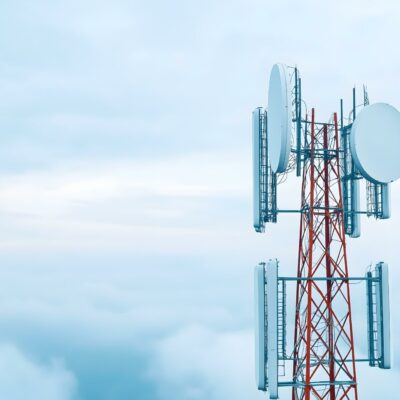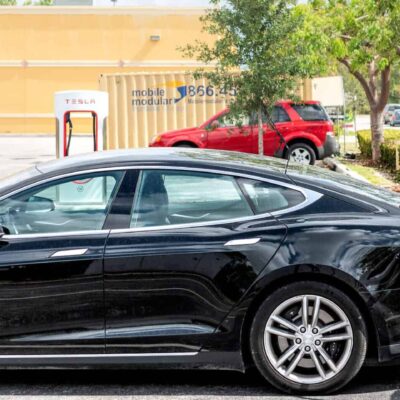As 5G rollouts become more widespread and connectivity capabilities expand, the technology required to utilize this new generation of the spectrum is prompting an increase in patent activity in the space. This increase in 5G patent activity creates the potential for IP litigation between industry incumbents and new entrants, especially as this technology enters other industry verticals.
An Academic’s Perspective on Wireless Patent Activity
To understand what is to come in the 5G space, we asked WIT Panel member and leading wireless expert Dr. Muriel Medard to evaluate the industry concerning patent growth, wireless expansion, and licensing agreements. Here’s what she had to say:
WIT: What are you seeing in the space surrounding the growth of 5G patents among major industry players?
Dr. Medard: 5G is generally increasing its capability in many different verticals, including automotive (with Avanci’s 5G Connected Vehicle Licensing Program as an example), gaming, and more. But the patent pools as they currently stand might or might not truly cover what is in those technologies.
This has created a sort of push-pull in the industry. As 5G continues expanding across markets, the technology and patent issues associated with this generation of the spectrum are pushing other players into alternate technology verticals. I see companies which used to push 5G, pivot towards 802.11, particularly those have sold of licensed out their wireless 5G portfolios. Systems that they previously would have dubbed as 5G are being categorized as being in the WiFi domain, but really, they are generic wireless techniques. This trend is illustrated in some long-standing cases involving 802.11, where patents that were generically meant for the wireless domain were found to be essential in some 802.11 standards.
WIT: What industries do you feel are the most impacted by this growth?
Dr. Medard: Companies in industries like automotive, satellite, private 5G, industrial networks, and IoT have been working in separate, rather siloed environments and may not be well positioned to manage this growth. Satellite, with its volatile mix of well-established companies and upstarts — some with mostly cash assets and limited technological savoir-faire– is ripe for some very problematic IP issues.
One major question, referring back to the 802.11 patent growth, explores the following: 5G is the first generation of the spectrum to work in tandem with WiFi. Given the increasing issues with patents in 802.11 and the increasing reliance of service providers on 802.11, will 802.11 open up a new front in patent litigation? Will service providers get dragged into it?
Up until now, service providers have largely relied on their vendors to protect them or to run interference.
Up until now, service providers have largely relied on their vendors for these matters. This might not hold with 802.11, which is coming from other vendors that might have different arrangements with their customers. Another facet of these new interactions is that there has been an increasing melding of service provisioning and equipment manufacturing, even though the industry was split into operators and equipment providers in the 1980s. Note that recently such re-unification, for example by purchasing of an operator by an equipment manufacturer, has been challenging.
WIT: What other unknowns could potentially shift the industry landscape?
Dr. Medard: O-RAN might shift the landscape. Despite delays, and sometimes reticence, some vendors have decided to take a run in the space. I feel that the situation in O-RAN is still murky on the IP side as the major drivers have a very different relationship to IP. This is partially because of the business model, and in great part because of different geographic circumstances.
WIT: What are your thoughts on 5G licensing agreements – have they evolved? If so, how?
Dr. Medard: My thoughts here are more on the players than the agreement terms themselves as the players are different in the composition and the state of their technology. The idea that there is a simple, maybe go-to entity for coding, for example, shifted in 5G with CA-Polar codes. The area is ripe for new events and possibly also disruption. Some of the technology, like LDPCs, harks back to the 1960s. There may also be new entrants, which may not look like the typical companies breaking into the market. Some of them are mainly international. This means that there will be a more international twist to litigation, potentially with US universities against Huawei and others.
Chip manufacturers, buoyed by the CHIPS Act and the need to provide new products, might jump into the fray. Some have started scouting out new wireless technologies, particularly in IoT. They are positioning themselves as possible alternatives to the incumbents, while still selling to the incumbents.
WIT: What conflicts do you think will arise from this growth in intellectual property?
Dr. Medard: The future will still see traditional conflicts (i.e. companies against companies and universities), but new ones will also arise on account of the different players discussed in my aforementioned answers. Currently, some companies, particularly hardware manufacturers, are distracted as they are in the process of figuring out how to manage their operations, in addition to deciding whether to split their businesses. If some of those splits happen, which seems at least quite possible, there may be a second rush from industry players for IP. That rush may generate its own issues in valuation and in tension between joining a patent pool or remaining on the side and enforcing.
The Essential Role of 5G Testifying Experts
As we head fast toward a new year of 5G patents and wireless innovation, the industry will see a host of legal issues. And in order to stay ahead of the curve when it comes to telecom disputes, engaging with an experienced testifying expert when preparing for complex conflicts is essential in creating a successful litigation strategy.
When it comes to intellectual property, Dr. Medard highlighted that patent battles between industry incumbents and new players will likely spark litigation in the space as manufacturers look to stake their claim in the market. Further, companies operating in verticals impacted by this growth will potentially struggle to manage the expansion. Technical experts, like engineers, can offer insights on evolving 5G technology to understand the specifics of 5G patents and alleged infringement.
Cross-licensing agreements will also be a point of contention for the industry as companies attempt to avoid patent litigation by collaborating on patent pools. Bringing on an industry insider or an economist on your case to deliver expert advice on patent pools, SEP analyses, and FRAND licensing rates can offer real value to your deposition.
Want to learn more about what’s to come in the wireless industry? At WIT, we have formed teams of testifying experts who touch on every aspect of 5G litigation, licensing, valuation, and business advice. Our leading 5G expert team was created to address what we expect to be the key areas of litigation involving wireless technologies. Reach out to WIT for 5G testifying experts who are uniquely qualified to support your next case.




